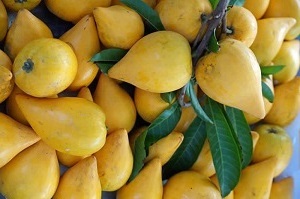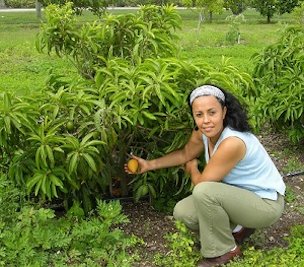From Fairchild Tropical Botanic Garden
by Noris Ledesma, Curator of Tropical fruit
Canistel
Pouteria campechiana

Canistel fruit
Canistel
(Pouteria campechiana) is in the sapote family and is well adapted to
south Florida. It will bloom and fruit throughout the year depending on
the variety and makes a perfect landscape tree for the home garden. It
is easy to grow, wind resistant, and tolerant of sandy or limestone
soils. And, oh yes, it will provide bushels of fruit for the kitchen.
Canistel
is delicious when mixed with milk products, making it perfect for milk
shakes, ice creams and natural smoothies. The fruit can be eaten fresh
of course, but you must wait for the fruit to fully ripen to a soft
texture and peel away the thin yellow skin. Immature fruit have sticky
latex that is harmless, but sticky and annoying. Added flavoring such
as lime juice and honey may be added to taste.
Canistel can be
use as a replacement sweetner for baking, ice creams and other sweet
treats. First the skinny on this product – as a sugar
replacement, it is superior to sugar, being an excellent source of
fibre, vitamins and minerals. It is a flavor enhancer and can be added
to any ice-cream, hot chocolate, smoothies, baby food, cakes, and all
kinds of desserts.
Producing your own fruit in the home garden
is easy. The tree is easy to grow with minimal care, given its superior
wind resistance and tolerance to sandy or limestone soils.

Noris Ledesma
Curator of tropical fruit at Fairchild Tropical Botanic Garden
Back to
Canistel Page
|
|

